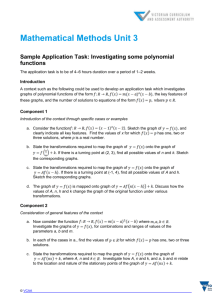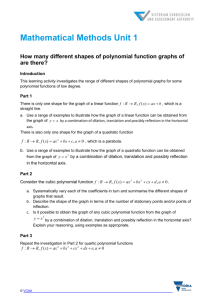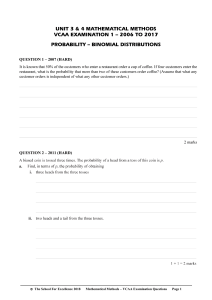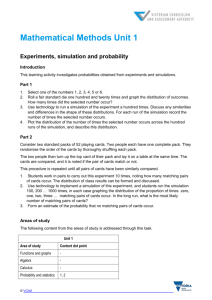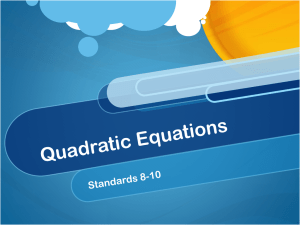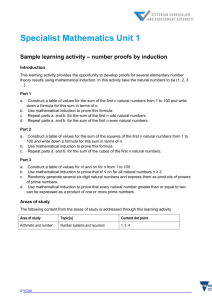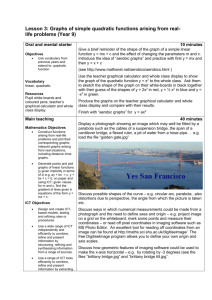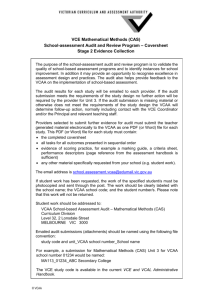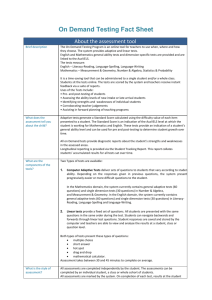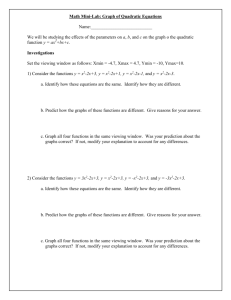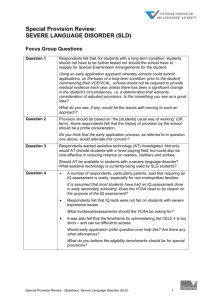Mathematical Methods Unit 3
advertisement
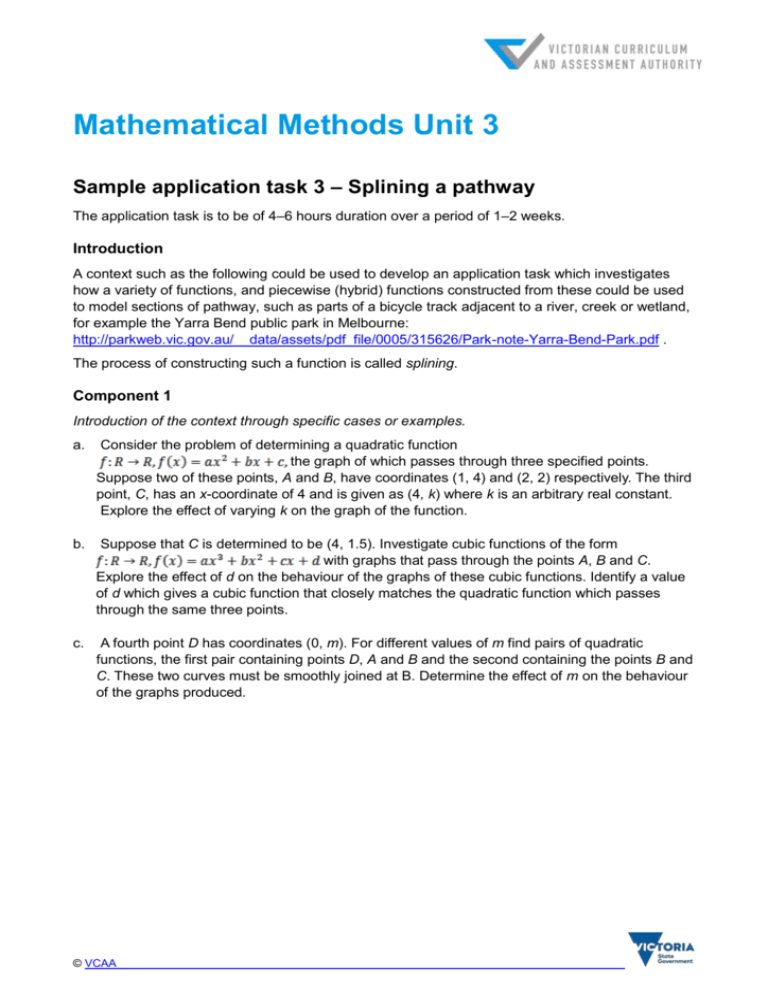
Mathematical Methods Unit 3 Sample application task 3 – Splining a pathway The application task is to be of 4–6 hours duration over a period of 1–2 weeks. Introduction A context such as the following could be used to develop an application task which investigates how a variety of functions, and piecewise (hybrid) functions constructed from these could be used to model sections of pathway, such as parts of a bicycle track adjacent to a river, creek or wetland, for example the Yarra Bend public park in Melbourne: http://parkweb.vic.gov.au/__data/assets/pdf_file/0005/315626/Park-note-Yarra-Bend-Park.pdf . The process of constructing such a function is called splining. Component 1 Introduction of the context through specific cases or examples. a. Consider the problem of determining a quadratic function the graph of which passes through three specified points. Suppose two of these points, A and B, have coordinates (1, 4) and (2, 2) respectively. The third point, C, has an x-coordinate of 4 and is given as (4, k) where k is an arbitrary real constant. Explore the effect of varying k on the graph of the function. b. Suppose that C is determined to be (4, 1.5). Investigate cubic functions of the form with graphs that pass through the points A, B and C. Explore the effect of d on the behaviour of the graphs of these cubic functions. Identify a value of d which gives a cubic function that closely matches the quadratic function which passes through the same three points. c. A fourth point D has coordinates (0, m). For different values of m find pairs of quadratic functions, the first pair containing points D, A and B and the second containing the points B and C. These two curves must be smoothly joined at B. Determine the effect of m on the behaviour of the graphs produced. © VCAA Mathematical Methods Unit 3 Component 2 Consideration of general features of the context Various sections of the river with different combinations of specified coordinates and dimensions can be used. The following provides a sample. A new bicycle track is to be constructed along the Yarra River in Kew between two pedestrian bridges labelled A and B on the map shown below. The presence of the golf course prevents it being constructed on the Western side of the river. The track is to follow the curves of the river on the Eastern side of the river. That is, it will go from A to B by the boathouse kiosk, passing between the river and Smith Oval. a. Explore how a model can be developed between the pedestrian bridges A and B using a series of smoothly joined quadratic functions. b. Design a measure for how well the pathway matches the curve of the river, and apply it to the model. Component 3 Variation or further specification of assumption or conditions involved in the context to focus on a particular feature or aspect related to the context. © VCAA Page 2 Mathematical Methods Unit 3 Improve the fit of your bicycle track, according to the measure you have designed, by using a combination of different types of functions. © VCAA Page 3 Mathematical Methods Unit 3 Areas of study The following content from the areas of study is addressed through this task. Area of study Content dot point Functions and graphs 2, 5 Algebra 5, 7 Calculus 4, 5 Probability and statistics - Outcomes The following outcomes, key knowledge and key skills are addressed through this task. Outcome Key knowledge dot point Key skill dot point 1 1, 7, 10, 12 7, 10, 11, 12, 13 2 1, 2, 3, 4 1, 2, 4, 5 3 1, 2, 3, 4, 6 2, 3, 4, 5, 6, 8, 9, 10, 11 © VCAA Page 4
